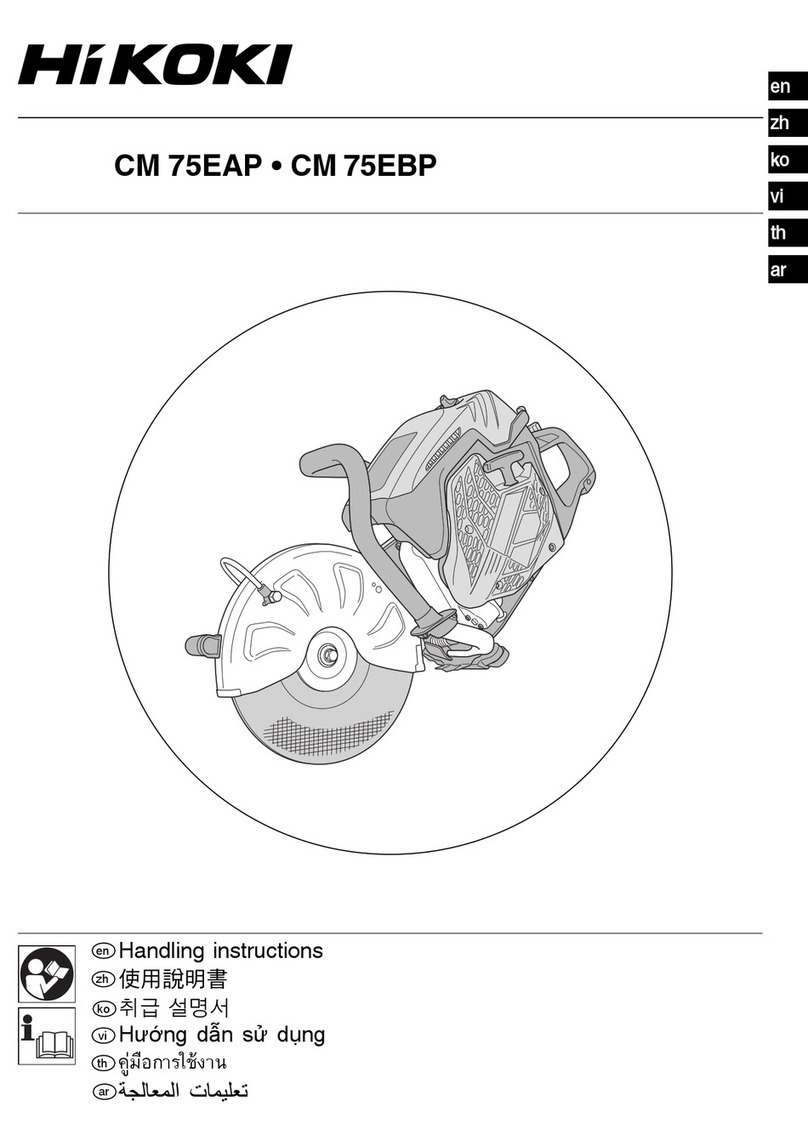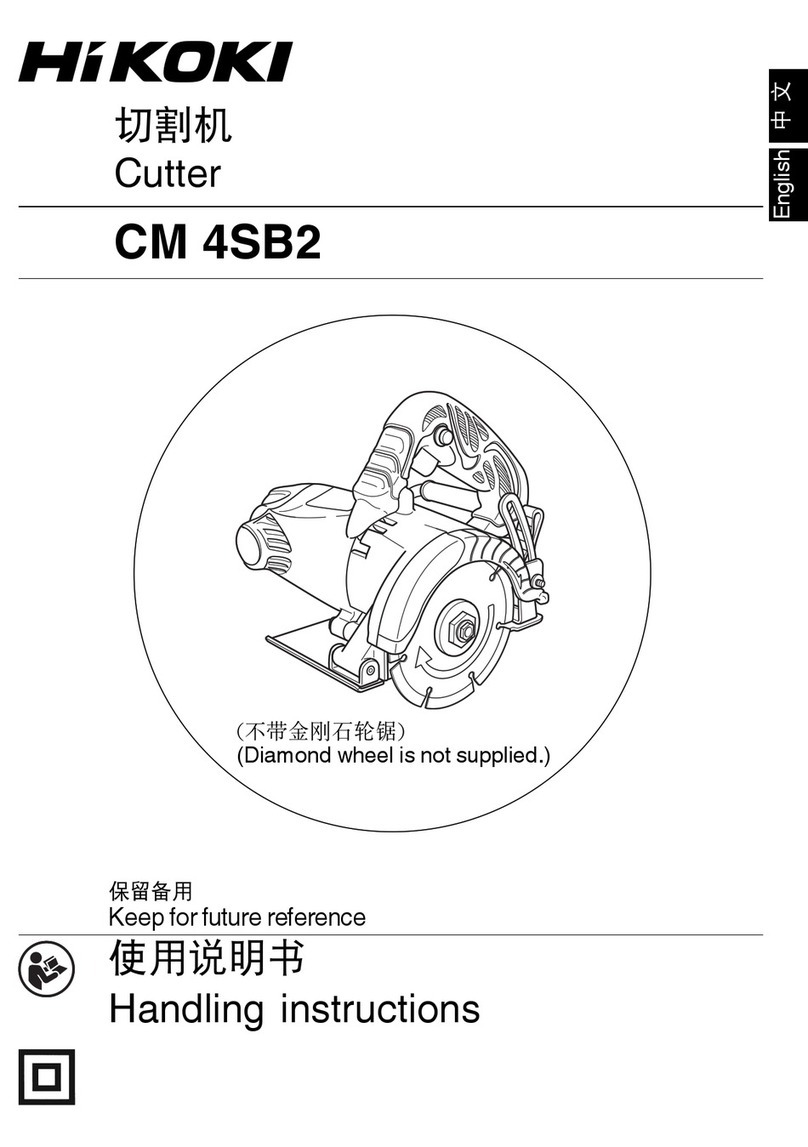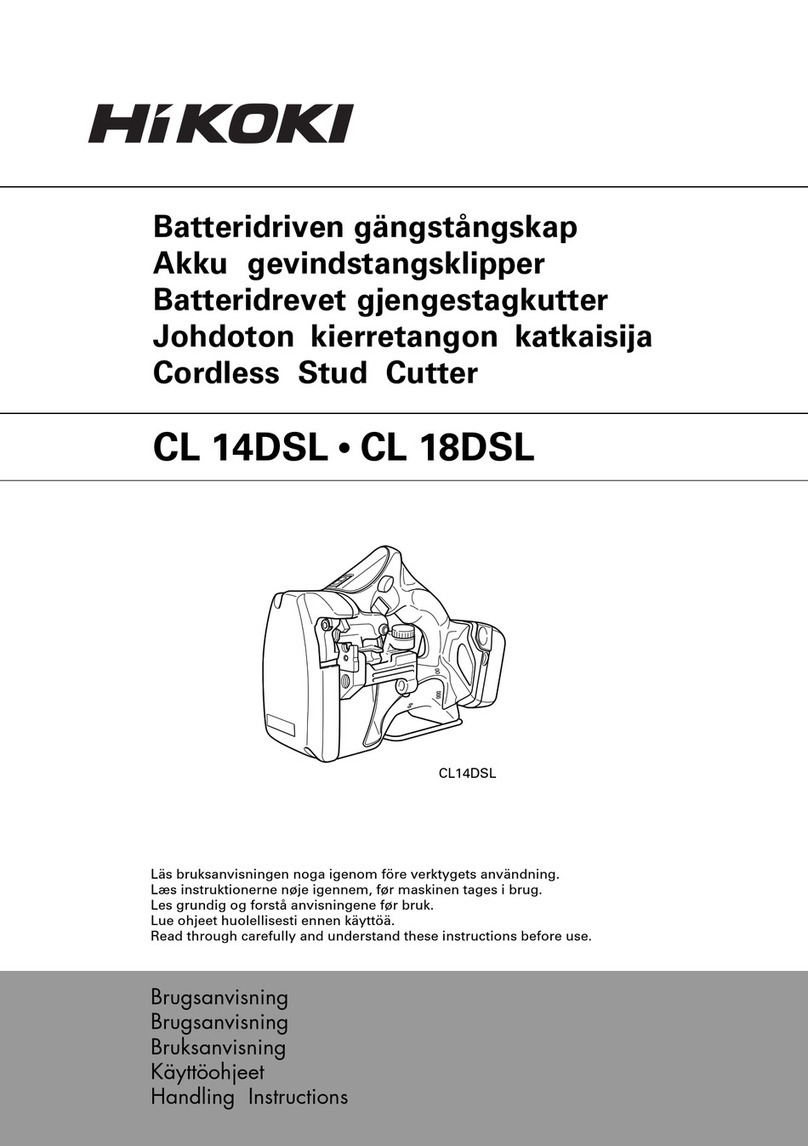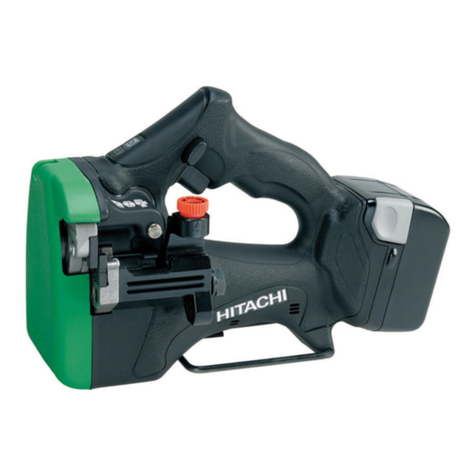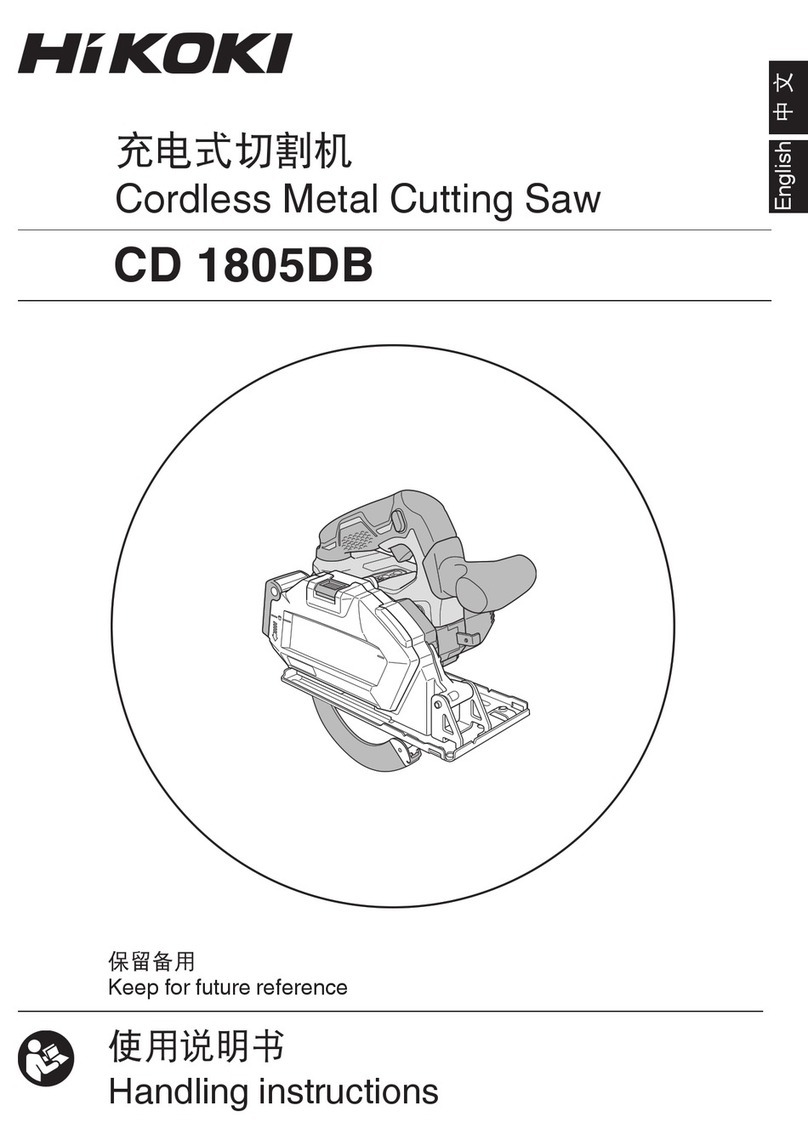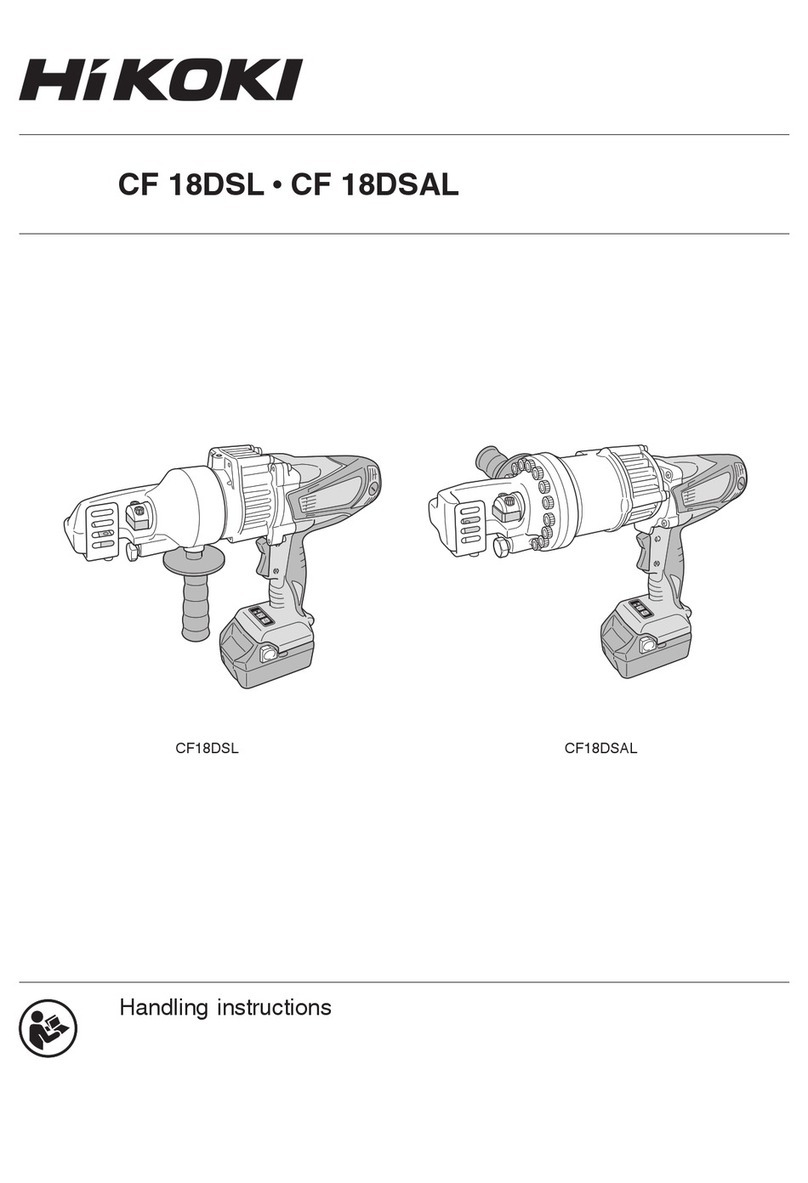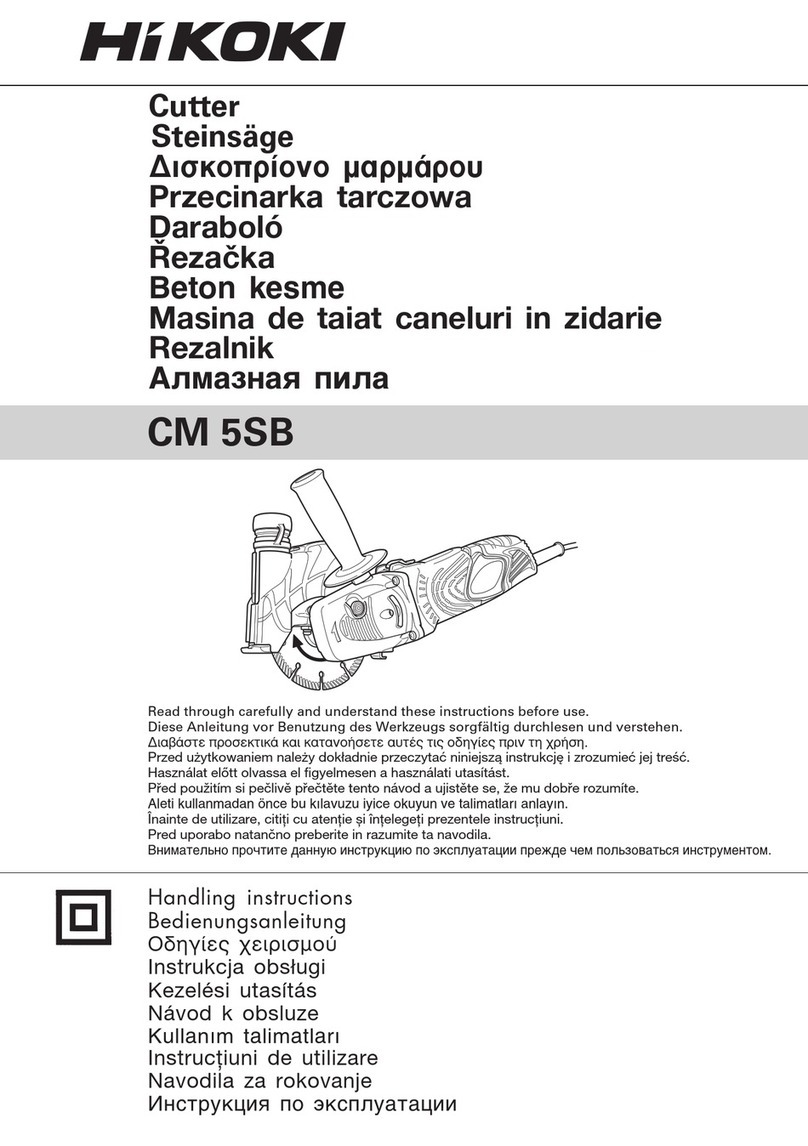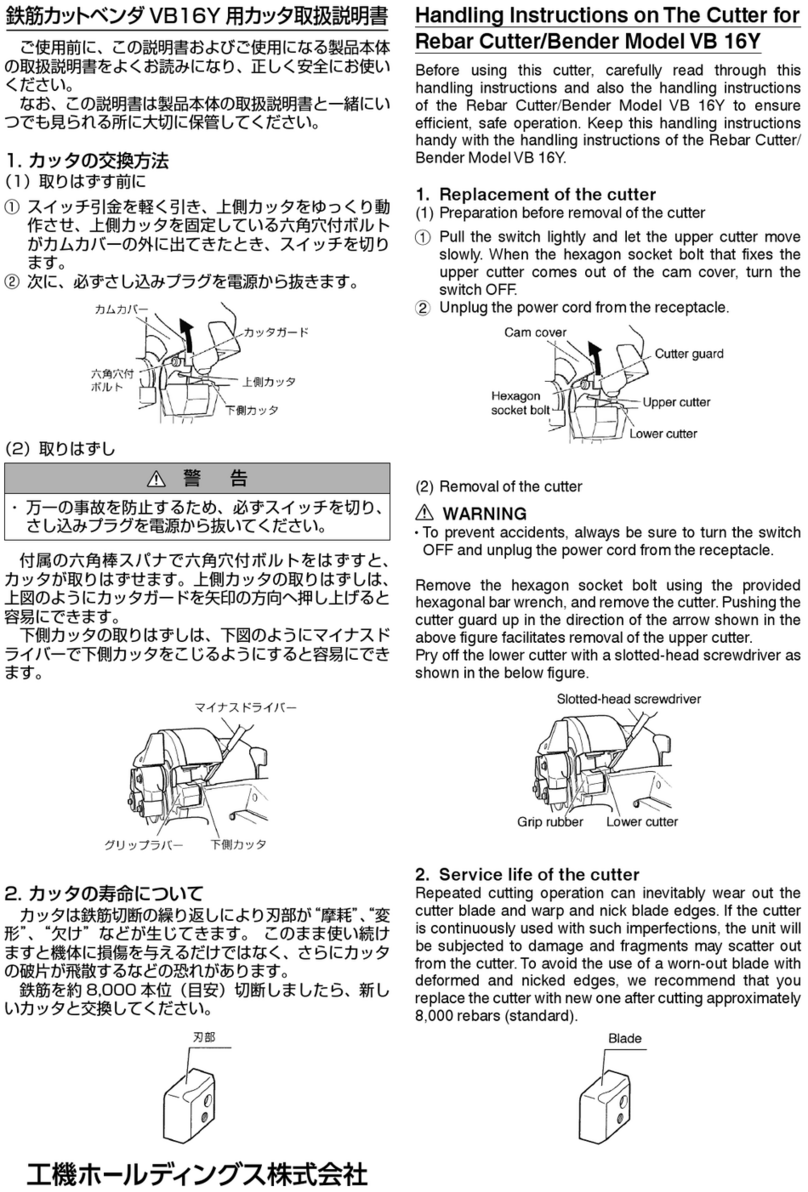
7
English
en
- Remove any adjusting key or wrench before turning the power tool on. A
wrench or a key left attached to a rotating part of the power tool may result
in personal injury.
- Do not overreach. Keep proper footing and balance at all times. This ena-
bles better control of the power tool in unexpected situations.
- Dress properly. Do not wear loose clothing or jewelry. Keep your hair,
clothing and gloves away from moving parts. Loose clothes, jewelry or
long hair can be caught in moving parts.
- If devices are provided for the connection of dust extraction and collec-
tion facilities, ensure these are connected and properly used. Use of these
devices can reduce dust-related hazards.
- Keep handles dry, clean and free from oil and grease. Slippery hands can
not safely control the power tool.
POWER TOOL USE AND CARE
- Do not force the power tool. Use the correct power tools for your applica-
tion. The correct power tool will do the job better and safer at the rate for
which it was designed.
- Do not use the power tool if the switch does not turn on and off. Any power
tool that cannot be controlled with the switch is dangerous and must be
repaired.
- Disconnect the plug from the power source and/or the battery pack from the
power tool before making any adjustments, changing accessories, or sto-
ring power tools. Such preventive safety measures reduce the risk of star-
ting the power tool accidentally.
- Do not cover the power tool’s air vents nor operate the tool on dirt. Use a
plywood base under the tool to keep armature and fan clean. If the vents are
covered, the motor will overheat and may burn out.
- Store idle power tools out of the reach of children and do not allow persons
unfamiliar with the power tool or these instructions to operate the power tool.
Power tools are dangerous in the hands of untrained users.
- Maintain power tools. Check for misalignment or binding of moving parts,
breakage of parts and any other condition that may affect the power tool’s
operation. If damaged, have the power tool repaired before use. Many acci-
dents are caused by poorly maintained power tools.
- Keep cutting tools sharp and clean. Properly maintained cutting tools with
sharp cutting edges are less likely to bind and are easier to control.
- Use the power tool, accessories and tool bits etc., in accordance with these
instructions and in the manner intended for the particular type of power tool,
taking into account the working conditions and the work to be performed.
Use of the power tool for operations different from those intended could
result in a hazardous situation.
